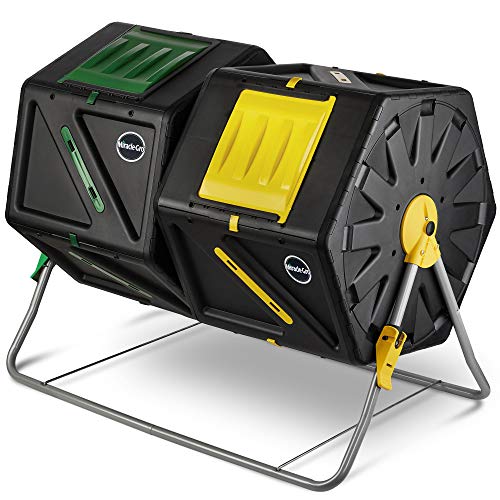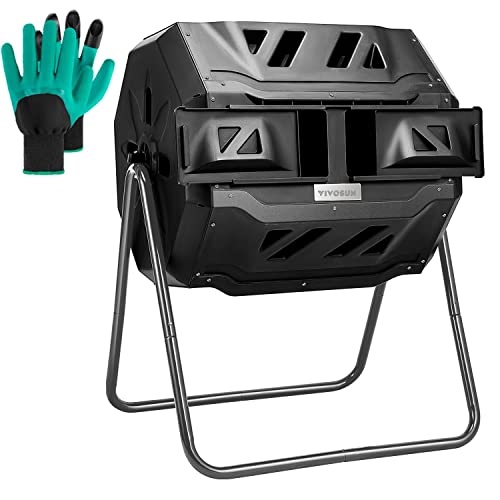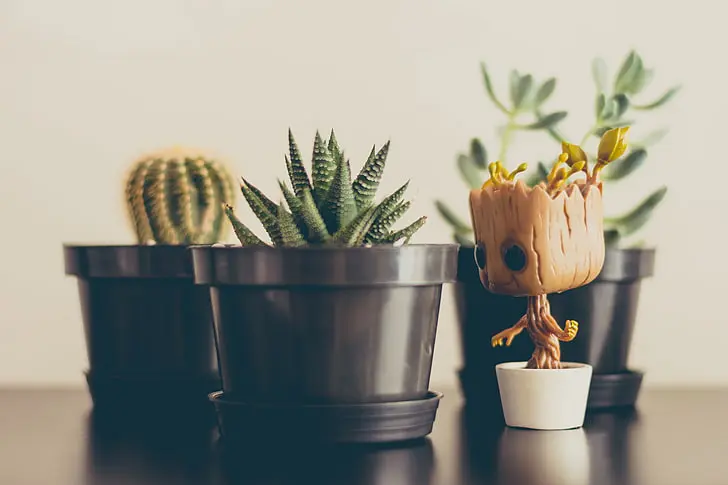
Uncover the magic of gardening with our knowledge on the best approach to make use of compost in potted crops. Your indoor yard will thrive with these easy, sustainable practices.
Consider turning your kitchen scraps correct proper right into a wealthy, nutritious complement in your potted crops. Seems like a inexperienced thumb’s dream, right?
Accurately, it’s time to face as much as the actual fact of composting! On this knowledge, we’ll stroll you thru the ins and outs of the best approach to make use of compost in potted crops.
From creating your explicit particular person compost to nurturing your indoor greenery, we’ll show you how to to remodel your potted crops correct proper right into a vibrant, thriving indoor yard. So, let’s dive in and get our palms significantly soiled!
How To Use Compost In Potted Crops
Welcome to your new favourite pastime: utilizing compost in potted crops! This isn’t virtually making your indoor yard flourish.
It’s about understanding the cycle of life right in your lounge, from kitchen scraps to nutrient-rich compost, and in the end, to vibrant, healthful indoor crops.
On this publish, we’ll cowl every issue from the fundamentals of composting to its software program program in your potted crops.
We’ll furthermore delve into troubleshooting widespread compost components and the advantages your crops will reap from this pure gold.
So, let’s embark on this thrilling journey to greener, happier crops collectively!
Definition of Compost
Let’s begin with the fundamentals, lets? Compost, usually known as black gold by yard lovers, is a wealthy, crumbly substance that’s teeming with life.
It’s created from pure supplies, suppose kitchen scraps like vegetable peels, espresso grounds, and eggshells, or yard waste like leaves and grass clippings.
These supplies break down over time, on account of laborious work of microorganisms, worms, and bugs.
The consequence? A nutrient-packed soil conditioner that’s great for giving your indoor crops or exterior crops or vegetable gardens a elevate.
Significance of Compost in Potted Crops
Now, you’d be questioning, Why should I’m going by the use of all this hassle for my potted crops?
Accurately, the reply lies contained in the unbelievable advantages of compost. Compost enriches the soil in your pots, offering your crops with the important dietary nutritional vitamins they should develop sturdy and healthful.
It improves soil constructing, guaranteeing higher water retention in sandy soils and improved drainage in clay soils.
Plus, it introduces useful microorganisms that assist defend your crops from sicknesses.
In a nutshell, utilizing compost in potted crops merely is just not solely suggestion nevertheless it absolutely actually’s like offering a gourmand meal to your inexperienced buddies. They’ll not solely survive nonetheless truly thrive!
Understanding Compost

Able to dive deeper into the world of composting? Understanding compost isn’t virtually figuring out what it’s, nonetheless in addition to about appreciating the intricate processes that remodel often waste correct proper right into a gardener’s treasure.
On this half, we’ll unravel the mysteries of compost, from its composition to the science behind its creation.
We’ll furthermore uncover the function of these tiny, normally missed heroes – the microorganisms – contained in the composting course of.
So, let’s get ready to uncover the fascinating world beneath the compost heap!
What’s Compost Made Of?
Compost is type of a hearty stew, made up of quite a lot of elements, every along with its non-public model to the combination.
It’s primarily composed of pure matter so have in mind factors like vegetable scraps, espresso grounds, eggshells, grass clippings, leaves, and even shredded newspaper.
These supplies are categorized into ‘greens’ which offer nitrogen and ‘browns’ which offer carbon.
The magic occurs when these elements decompose over time, remodeling correct proper right into a nutrient-rich, soil-like substance that crops totally love.
The Science Behind Composting
Now, let’s positioned on our science hats for a second. The composting course of is an enchanting event of nature’s recycling system.
It’s a pure course of the place microorganisms, just like micro organism and fungi, break down pure matter contained in the presence of air and water.
This course of generates warmth, and that’s why compost piles normally truly actually really feel heat to the contact.
Over time, the distinctive pure supplies are reworked correct right into a gradual, humus-like substance that’s teeming with dietary nutritional vitamins.
The Function of Microorganisms in Composting
Microorganisms are the unsung heroes of the composting course of.
These tiny creatures, together with micro organism, fungi, and even some varieties of bugs and worms, work tirelessly to interrupt down the pure supplies in your compost pile.
They munch away on the scraps, breaking them down into less complicated substances.
It’s their prepare that generates the warmth we talked about earlier. So, subsequent time you check out your compost pile, consider to thank these little guys for his or her laborious work!
Distinction Between Potting Soil and Compost
Whereas each potting soil and compost are important for plant progress, they serve fully completely totally different capabilities.
Potting soil, on account of the title suggests, is a medium for rising crops. It gives constructing for the plant roots and helps retain water.
Compost, then as soon as extra, is further of a soil conditioner. It’s wealthy in dietary nutritional vitamins and is also blended into potting soil to enrich it.
Whereas you can develop crops in compost alone, it’s normally finest to combine it with potting soil to offer among the many finest setting in your crops.
Uncover methods to Make Compost
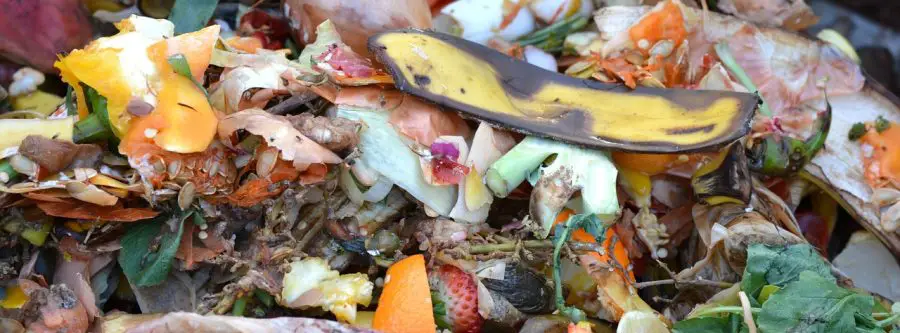

Are you able to roll up your sleeves and dive into the work of establishing compost?
Creating your explicit particular person compost would possibly seem to be a frightening train, nonetheless notion me, it’s less complicated than you suppose.
Plus, it’s terribly rewarding. Not solely will you be decreasing waste, nonetheless you’ll even be creating one issue terribly useful in your crops. Wide range!
On this half, we’ll knowledge you thru the tactic, from deciding on the fitting compost bin to understanding what to compost and what to steer clear of.
So, let’s get began on this thrilling journey to creating your very non-public selfmade compost black gold!
Deciding on the Right Compost Bin
Choosing the proper compost bin is like selecting a house in your future compost.
There are fairly just a few selections available on the market, from easy selfmade bins created from earlier pallets to fancy tumbling bins that make turning your compost a breeze.
The acceptable bin for you depends upon upon your house, value fluctuate, and the way in which wherein fairly a bit effort you wish to put into your composting.
Take note, the important issue decisions to hunt for are good air stream and quick entry to level out your compost.
What to Compost: Greens and Browns
Composting is all about stability, significantly between ‘greens’ and ‘browns’.
Greens are supplies wealthy in nitrogen, like vegetable scraps, espresso grounds, and fashionable grass clippings.
Browns, then as soon as extra, are carbon-rich supplies like dried leaves, straw, or shredded newspaper.
An outstanding rule of thumb is to goal for a stability of compost supplies, nonetheless don’t fear an excessive amount of about being exact. Nature is fairly forgiving!
The C:N ratio for compost
The carbon-to-nitrogen ratio (C:N ratio) is a vital think about composting. This ratio refers once more to the quantity of carbon (C) in relation to nitrogen (N) in your compost pile.
The right C:N ratio for composting is usually thought-about to be spherical 25-30:1.
Which suggests for each 25-30 elements of carbon, it’s best to have 1 a part of nitrogen.
Carbon-rich supplies (usually known as browns) embrace factors like dried leaves, straw, and paper.
These supplies present vitality for the composting organisms. Nitrogen-rich plant provides (usually known as greens) accommodates factors like vegetable scraps, espresso grounds, and grass clippings. These supplies present protein for the composting organisms.
Sustaining an outstanding C:N ratio is necessary for setting nice composting.
If there’s an excessive amount of carbon, the composting course of could also be gradual.
If there’s an excessive amount of nitrogen, it is attainable you may find yourself with a smelly compost pile as the surplus nitrogen converts into ammonia gasoline.
Take note, these are widespread concepts and composting is also versatile.
Don’t fear should you don’t get the ratio precisely right as composting is a pure course of and it’ll occur even when circumstances aren’t great.
What to Keep away from in Compost
Whereas composting is an efficient choice to recycle, there are some factors that should in no way make their methodology into your compost bin.
Keep away from along with meat, dairy, and diseased crops, as these can enchantment to pests or create disagreeable smells.
Keep away from along with crops with weed seeds as compost could not get scorching sufficient to kill them and as well as you don’t wish to add them to your yard.
Furthermore, stay away from any supplies which might embrace dangerous substances, like chemically-treated wooden or shiny printed paper.
Steps to Composting
Prepared to begin composting? Correct proper right here’s a simple step-by-step knowledge.
• First, select an relevant location in your compost bin.
• Subsequent, begin your compost pile with a layer of browns for good airflow.
• Then, add a layer of greens and a little bit of little little bit of soil or completed compost to introduce microorganisms.
• Proceed along with greens and browns in layers, trying to keep up up a stability.
• Flip your compost pile each few weeks to assist it decompose evenly.
• With time, endurance, and a little bit of little little bit of care, you’ll have wealthy, crumbly compost prepared in your potted crops!
The Benefits of Tumbling Composters
Tumbling composters are a unbelievable selection for many yard lovers and for good perform.
These useful fashions current a number of advantages that can make your composting journey a breeze.
Firstly, they’re terribly user-friendly. With a simple flip of the handle, your compost is blended and aerated, with no heavy lifting required.
This not solely saves you effort nonetheless in addition to hurries up the composting course of.
Thought of certainly one of many standout benefits of tumbling composters is their means to produce completed compost fairly a bit sooner in contrast with typical compost piles or bins.
That is largely attributable to their design which permits for straightforward and frequent aeration each time the composter is turned.
This elevated oxygen circulate into helps tempo up the decomposition course of carried out by the microorganisms contained in the compost.
So, should you’re eager to get your palms on nutrient-rich compost in a shorter timeframe, a tumbling composter is a wonderful selection.
It’s all about turning waste into plant-boosting compost shortly and efficiently!
Secondly, tumbling composters are sometimes enclosed, which helps protect pests at bay and reduces any potential odors.
They’re furthermore compact and tidy, making them an unbelievable likelihood for smaller areas or for lots of who favor a neater look.
Lastly, many tumbling composters are designed with twin chambers, permitting you to have two batches of compost at fully completely totally different ranges.
This means you presumably can have a gradual current of compost in your potted crops.
So, should you’re on the lookout for a useful, setting nice, and tidy composting reply, a tumbling composter is likely to be merely the ticket!
Uncover methods to Use Compost in Potted Crops
Now that we’ve acquired our palms soiled and created our non-public compost, it’s time for the pleasing half, utilizing it in our potted crops!
That is the place you’ll see all of your laborious work repay as you watch your crops thrive.
However how precisely do you benefit from compost in potted crops? On this half, we’ll knowledge you thru the tactic, from checking the readiness of your compost to the precise software program program and upkeep.
So, let’s get these inexperienced thumbs working and provides your potted crops the nutrient enhance they deserve!
Checking the Compost
Prior to we begin utilizing our compost, we would favor to verify it’s prepared. Completed compost should be darkish, crumbly, and odor like earth.
If it nonetheless has recognizable bits of meals or leaves, give it further time. Furthermore, it should be cool to the contact.
Take note, composting is a course of, and endurance is necessary. It’s correctly undoubtedly well worth the wait to have nutrient-rich compost that your potted crops will love.
Mixing Compost with Potting Soil
As shortly as your compost is prepared, it’s time to combine it collectively alongside along with your potting soil.
This isn’t a exact science, nonetheless an outstanding rule of thumb is to goal for a 1:1 ratio of compost to potting soil.
This could present your crops a balanced mixture of sufficient dietary nutritional vitamins from the compost and the event and drainage they want from the potting soil.
Merely combine the 2 collectively till they’re appropriately blended, and voila! You’ve acquired a supercharged potting combine prepared in your crops.
Don’t use yard soil in your indoor crops or in containers as it would presumably embrace pests and would possibly compact intently.
How Masses Compost to Add to Potting Soil
The quantity of compost it’s best in order so as to add to your potting soil depends upon upon the needs of your crops and the same old of your compost and potting soil.
As talked about earlier, a 1:1 ratio is an environment friendly place to begin. Nonetheless, in case your compost is likely to be very wealthy or your crops favor lighter soil, it is attainable you may wish to use loads a lot much less compost.
Alternatively, in case your potting soil is missing in dietary nutritional vitamins, a bit further compost is likely to be useful.
Completed compost is not going to burn your crops like chemical fertilizers can. If actuality you presumably can develop crops in straight compost with no injury.
Take note, gardening is an work as fairly a bit as a science, so don’t be afraid to experiment and uncover what works finest for you and your crops.
Making use of compost to potted crops
Alright, we’ve acquired our compost prepared and our potting soil blended, now comes the thrilling half, making use of the compost to our potted crops!
That is the place we get to see the fruits of our labor as we give our crops a nutrient-packed handle.
However how can we go about it? On this half, we’ll cowl every issue from how fairly a bit compost to make the most of, to the fully completely totally different strategies of software program program.
So, let’s get these pots prepared and provides our crops the feast they’ve been ready for!
Can I Put Compost on Extreme of the Soil?
This methodology is usually known as extreme dressing, and it’s a unbelievable, no-fuss chance to enrich your potted crops with compost.
Merely unfold a layer of compost on extreme of the prevailing soil in your pots.
Over time, watering and pure processes will assist the dietary nutritional vitamins contained in the compost seep down into the soil, giving your crops a gradual current of dietary nutritional vitamins.
It’s a simple and setting pleasant chance to strengthen the correctly being of your crops.
Can You Use Compost as Mulch?
Compost makes a superb mulch in your potted crops. Making use of a layer of compost on extreme of your potting soil may help retain moisture, suppress weeds, and slowly launch dietary nutritional vitamins into the soil.
Plus, it affords your pots a neat, completed look. Merely consider to depart some house all through the plant stems to forestall any potential rot components.
Compost for Crops in Pots
Compost is an exact handle for any plant, and potted crops are no exception.
Whether or not or not or not you’re rising herbs, greens, or decorative crops in pots, along with compost can considerably enhance their correctly being and vigor.
It gives various dietary nutritional vitamins and improves the event and moisture-holding performance of the potting soil, and improves soil correctly being making it a unbelievable addition to any potted plant’s routine.
Compost in Container Gardens
Inside the event you’re a container gardener, compost is your finest buddy. It’s a pure, cost-effective methodology to offer your container crops with the dietary nutritional vitamins they should thrive.
You may combine it into your potting soil or use it as a mulch within the midst of the rising season. Every methodology, your container crops will thanks for the nutrient enhance!
Upkeep of Compost in Potted Crops
Sustaining compost in your potted crops is fairly easy.
Inside the event you’re utilizing compost as a soil modification, it is attainable you may wish to add a current layer of compost a few cases a yr, normally contained in the spring or fall.
Inside the event you’re utilizing compost as mulch, merely add a mannequin new layer when the sooner one begins to skinny out.
Take note, compost is pure and would possibly proceed to interrupt down over time, so widespread additions may help defend the nutrient ranges in your pots.
Making Compost Tea
Compost tea is a unbelievable chance to supply your crops a nutrient enhance, and among the many finest half is, it’s fairly easy to make!
Correct proper right here’s a fast knowledge:
• Begin with a handful or two of compost. The richer and extra completed your compost, the higher your tea could also be.
• Place the compost in a bucket and add water. The ratio doesn’t need to be exact nonetheless goal for about 5 elements water to 1 half compost.
• In case your faucet water is chlorinated, let it sit out in a single day earlier than utilizing it to permit the chlorine to evaporate.
• Stir the combination appropriately and let it sit for 3-4 days. All by means of this time, the water will extract the dietary nutritional vitamins from the compost. Stir the combination a few cases a day to assist the tactic alongside.
• After 3-4 days, pressure the combination to take away the solids. It is best to benefit from a cheesecloth or a superb mesh strainer for this. The liquid you’re left with is your compost tea!
• To make the most of your compost tea, merely water your crops with it. It’s delicate sufficient for use as normally as you want, and your crops will love the additional dietary nutritional vitamins!
Take note, compost tea is finest used fashionable, so attempt to make use of all of it inside a day or two of establishing it.
Everytime you’ve acquired any leftovers, you presumably can at all times pour them as soon as extra into your compost pile.
Troubleshooting Frequent Compost Components
Even with among the many finest intentions, normally factors can go awry with our compost.
However don’t fear, it’s all a part of the journey and there’s at all times an answer!
On this half, we’ll type out some widespread compost components that you just simply would possibly encounter, from disagreeable odors to gradual decomposition and even undesirable pests.
Take note, each disadvantage is a chance to test further regarding the fascinating strategy of composting. So, let’s roll up our sleeves and get problem-solving!
Coping with Odors
In case your compost pile is giving off an disagreeable odor, don’t panic! It’s normally an indication that one issue’s a bit off stability.
Usually, it’s due to the compost pile is simply too moist or there’s an excessive amount of inexperienced provides, each of which may create an absence of oxygen and finish in smelly anaerobic decomposition.
To revive this, strive turning your compost to extend aeration and along with some browns, like dried leaves or shredded newspaper, to soak up further moisture and stability the inexperienced supplies.
Gradual Decomposition
In case your compost pile appears to be taking perpetually to interrupt down, there would possibly very correctly be just a few causes it’s taking a extremely very very long time.
It is likely to be too dry, whereby case you presumably can add some water or inexperienced supplies to extend moisture.
Moreover it’s missing in nitrogen, which is crucial for decomposition. Along with further inexperienced supplies may help with this.
Lastly, turning your compost pile typically can tempo up the decomposition course of by enhancing aeration and mixing the supplies.
Undesirable Pests and Flies
Undesirable pests and flies are a typical drawback in composting, nonetheless they’re normally simple to take care of.
Most pests are involved with compost piles attributable to kitchen meals scraps, notably meat and dairy merchandise, which should be averted in compost for finest outcomes.
Inside the event you’re coping with a fly drawback, strive defending your kitchen scraps with a layer of browns everytime you add them to the pile.
It will moreover help deter flies and in addition to stability the inexperienced and brown supplies in your compost.
For higher pests, a compost bin with a protected lid is usually reply.
Advantages of Utilizing Compost in Potted Crops
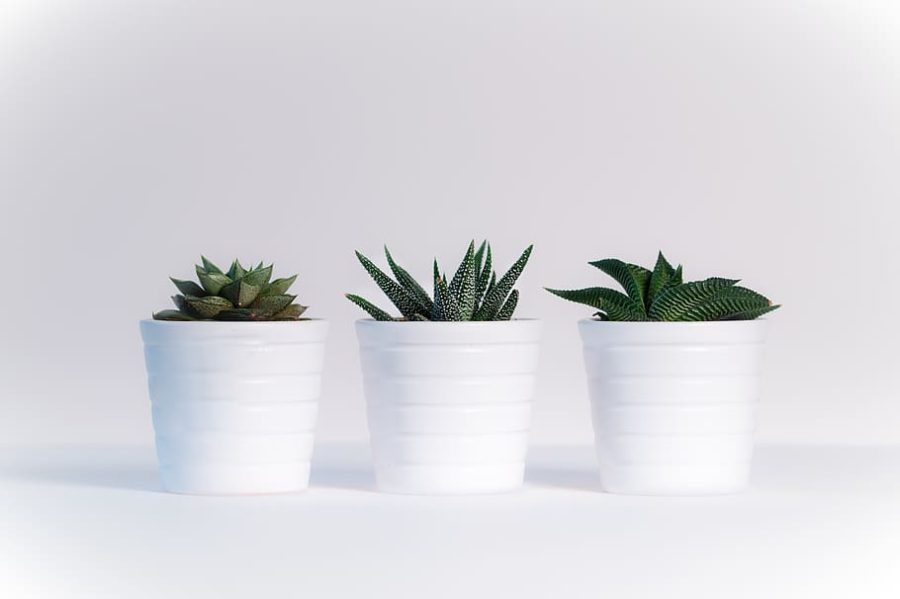

Now that we’ve lined the how-to’s of composting and troubleshooting widespread components, let’s talk regarding the thrilling half, the advantages of utilizing compost in potted crops!
That is the place all of your laborious work pays off and as well as you get to see the fruits (or flowers, or leaves) of your labor.
Compost is just not solely a soil modification, it’s a game-changer for any potted plant.
From enhancing soil texture to enhancing nutrient content material materials supplies and even suppressing sicknesses, the advantages of compost are literally glorious. So, let’s dive in and uncover these advantages in additional facet!
Improved Soil Texture
Quite a lot of the noticeable advantages of utilizing compost in potted crops is the occasion in soil texture.
Compost helps to create crumbly, well-structured soil that’s simple for roots to penetrate.
It improves the soil’s means to carry onto important dietary nutritional vitamins and water, whereas nonetheless permitting further water to empty away, stopping waterlogging.
This means your crops have a relentless current of what they should develop, with out the potential of their roots turning into waterlogged and oxygen-starved.
Illness Suppression
Compost might even assist to suppress plant sicknesses. It introduces useful microorganisms to the soil, which may outcompete disease-causing organisms, holding your crops further healthful.
Moreover, these useful microorganisms can stimulate the plant’s non-public pure defenses, making them further proof in opposition to sicknesses.
So, by along with compost to your pots, you’re not merely feeding your crops, you’re furthermore serving to to guard them!
Enhanced Nutrient Content material materials supplies
Final nonetheless actually not least, compost is a powerhouse of dietary nutritional vitamins. It’s wealthy contained in the important dietary nutritional vitamins that crops have to develop, together with nitrogen, phosphorus, and potassium, together with quite a lot of micronutrients.
These dietary nutritional vitamins are launched slowly over time, offering a gradual current to your crops.
That is in distinction to artificial fertilizers, which may present a fast burst of dietary nutritional vitamins nonetheless then depart the soil depleted.
With compost, your potted crops have a relentless, balanced current of the dietary nutritional vitamins they should thrive.
Compost for Crops in Pots FAQs
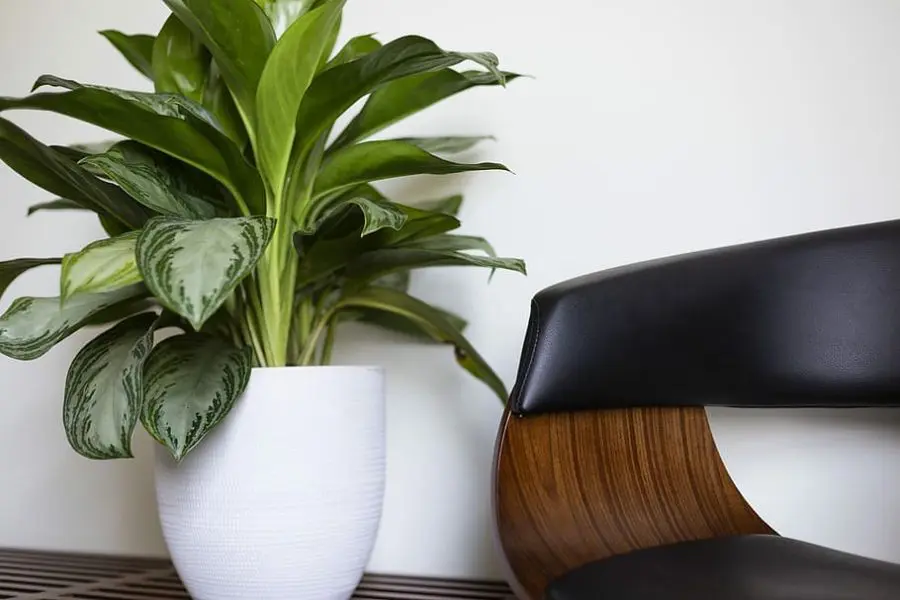

We’ve lined a substantial amount of flooring on our composting journey, and as well as it is attainable you may nonetheless have just a few questions.
Curiosity is the gardener’s finest instrument. On this half, we’ll type out quite a lot of in all probability probably the most steadily requested questions on composting and utilizing compost in potted crops.
From how normally to level out your compost pile as to for many who presumably can compost year-round, we’ve acquired you lined. So, let’s dive into these questions and quench that thirst for knowledge!
Q: Can I Use Compost for Potting Soil?
A: Absolutely! Compost is a unbelievable addition to potting soil. Nonetheless, it’s finest to make the most of compost as an modification to potting soil reasonably than utilizing it alone.
An outstanding rule of thumb is to combine equal elements compost and potting soil for a nutrient-rich, well-draining combine.
Q: How Usually Ought to I Flip My Compost Pile?
A: Turning your compost pile as shortly as each week or two is an environment friendly observe.
Inside the event you uncover your compost pile is smelly or not breaking down, it would want further frequent turning.
Q: How Extended Will It Take to Make Completed Compost?
A: The time it takes to make completed compost can fluctuate broadly, nonetheless normally, compost can take anyplace from 2 months to a yr to totally mature.
Take note, composting is a pure course of and endurance is necessary!
Q: Can I Compost Yr Spherical?
A: Constructive, you presumably can compost year-round! Whereas the composting course of slows down in colder native climate, it doesn’t cease fully.
You may proceed so as in order so as to add supplies to your compost pile all by way of the winter.
Q: What Ought to I Do if My Compost Bin Turns into Soggy?
A: In case your compost bin turns into soggy, strive along with further browns, like dried leaves or shredded newspaper, to soak up the surplus moisture.
Turning the compost might even assist by introducing further air and balancing out the moisture.
In case your compost bin is regularly too moist, it is attainable you may wish to affirm if it’s in a location the place it’s getting an excessive amount of rain, and think about shifting it if necessary.
How To Use Compost In Potted Crops Conclusion
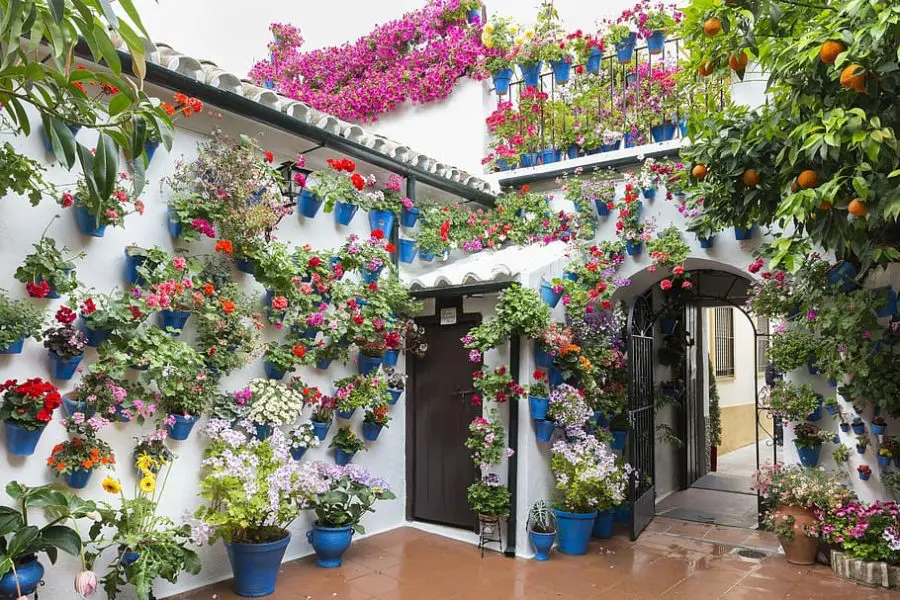

We’ve come a good distance on our composting journey, haven’t we?
From understanding what compost is product of to creating our non-public, and in the end utilizing it to spice up the correctly being of our potted crops. It’s been fairly an journey!
However as we wrap factors up, it’s necessary to mirror on what we’ve realized and the way in which wherein we’re ready to use it in our gardening practices.
On this concluding half, we’ll recap the significance of compost in potted crops and encourage sustainable practices.
So, let’s take a second to know the magic of composting and the wonders it does for our potted crops!
Recap of the Significance of Compost in Potted Crops
Compost is certainly a game-changer with regards to potted crops. It’s not virtually offering dietary nutritional vitamins, though that’s an infinite a part of it.
Compost improves the feel of the soil, making it simpler for roots to develop and for water to empty.
It introduces useful microorganisms that can assist defend crops from sicknesses.
And it’s a sustainable option to recycle kitchen and yard waste, turning it into one issue that can nourish your crops.
So, whether or not or not or not you’re rising herbs in your windowsill or flowers in your balcony, compost might make a world of distinction.
Encouragement for Sustainable Practices
As we conclude, I wish to encourage you to embrace composting as a part of your gardening routine.
It’s a small step that can have an infinite impression, not merely on the correctly being of your crops, nonetheless on the correctly being of our planet.
Composting reduces the quantity of waste that ends in landfills and reduces the necessity for artificial fertilizers.
It’s a win-win state of affairs for everybody! So, protect composting, proceed to be taught, and proceed to develop. Your crops and the planet will thanks.








